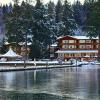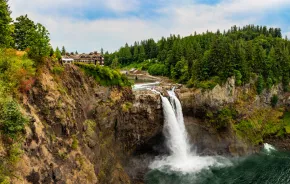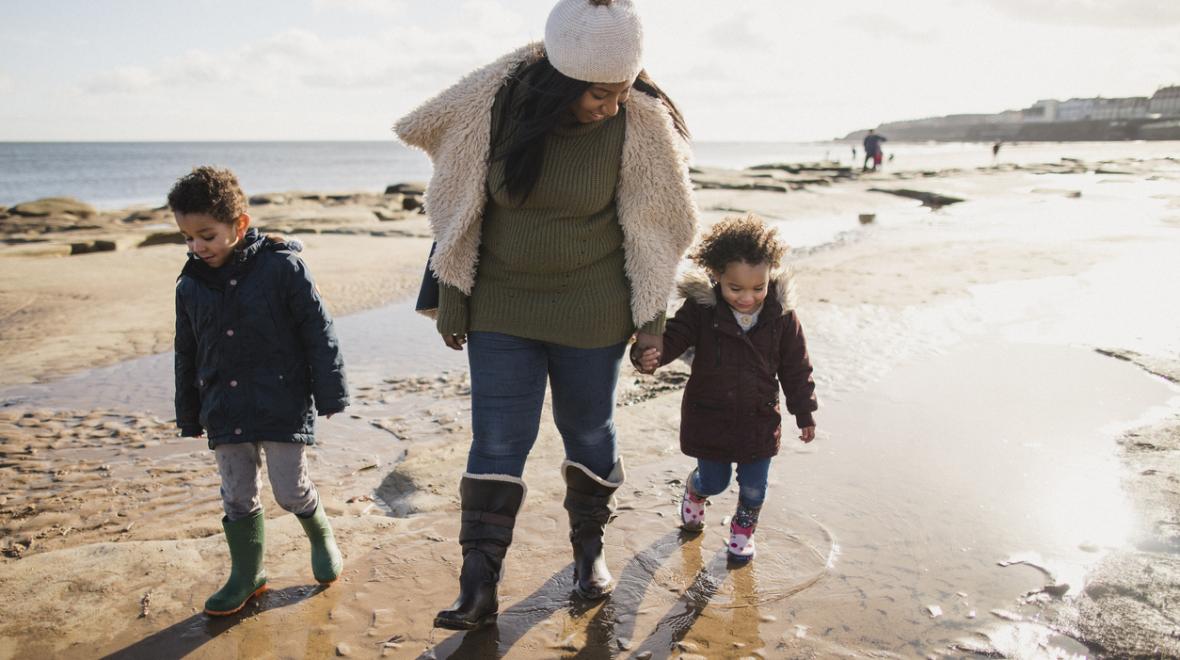
Revel in our Pacific Northwest stormy season with a getaway designed to place you in eyeshot of huge ocean waves — waves that can roll in at a speed of 25 miles per hour! The best time to see these natural spectacles is winter, of course. Bundle up and let's go!
Washington Coast storm-watching destinations
1. Westport
Westport is a very safe place to watch storms, says John Shaw, executive director of the Westport Maritime Museum. Stake out a place early in the viewing tower at the intersection of Westhaven and Neddie Rose drives in Westport; there is a generous expanse of rail area here, especially if you beat the news media to the tower. If you don’t, explore the Lighthouse Trail — which starts at the tower — for a good vista. Westport Light State Park makes for an excellent outlook point if you remain on the hill. You’ll need a Discover Pass to park here.
Tip: If a squall isn’t looming, look for hidden glass floats. Shaw says his museum colleagues typically conceal 800 floats between November and April for the annual Westport Wild Floats event.
2. Rialto Beach
About a 20-minute drive from Forks, Rialto Beach lures storm watchers and beachcombers alike. Thrashing waves can hurtle as far inland as the parking lot, so beware! At low tide, when no wave outburst is expected, climbing through the Hole in the Wall arch to explore tide pools and rocks makes a good alternative activity. You’ll find this arch, which was sculpted by the sea, approximately 1.5 miles north of Rialto Beach.
Tip: Always carry a tide chart, available from local visitor centers and coastal ranger stations, so you don’t get trapped by a rising tide.
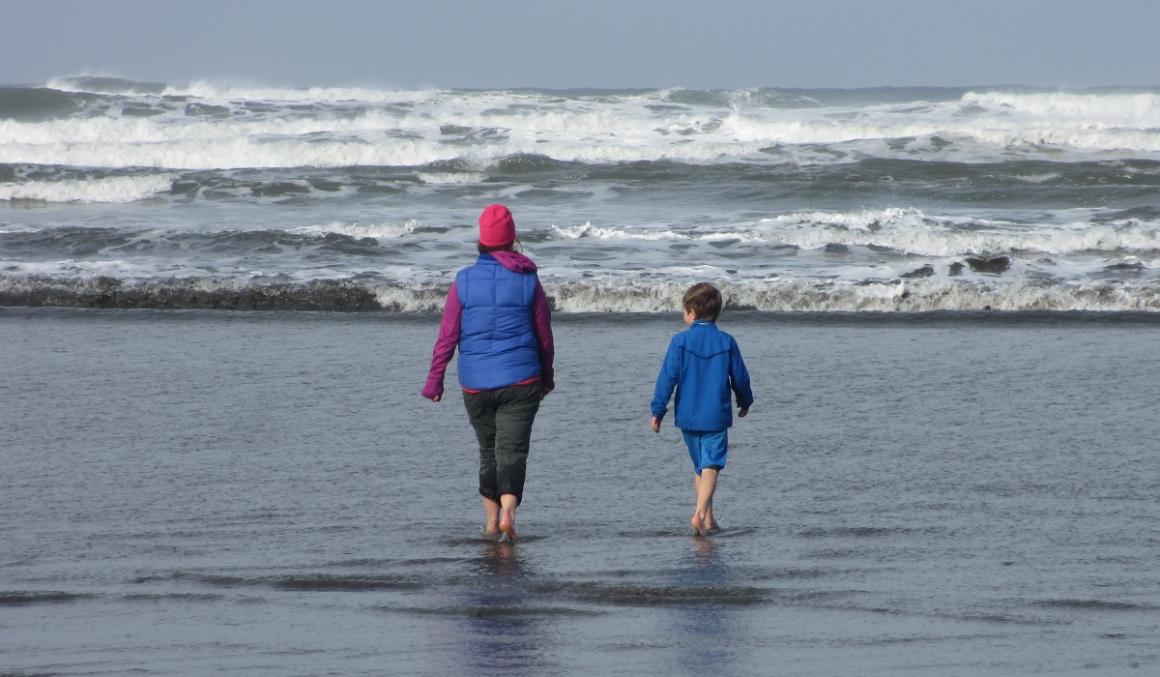
3. Kalaloch
You’ll have a great vantage point either indoors or outdoors at Kalaloch Lodge. Rooms at the Seacrest House include private balconies or patios facing the Pacific Ocean.
Tip: If you prefer, hike the 1.4-mile loop trail at Ruby Beach or the 0.8-mile Kalaloch Beach Trail 4, both off U.S. Highway 101, to their accessible viewpoints.
4. Cape Disappointment
The best spot on the Long Beach Peninsula (and maybe the best in the state, if you don’t mind being out in a storm) is the North Jetty at Cape Disappointment State Park, says Carol Zahorsky, who is a public relations consultant for the area.
Signature images often depict waves crashing against the cape’s headland with Washington's own Waikiki Beach in the foreground. Keep all of the safety precautions in mind (see below), because this area can get quite thrilling when the tides and winds are at their most extreme during a winter storm, says Zahorsky.
Note: You’ll need a Discover Pass to park.
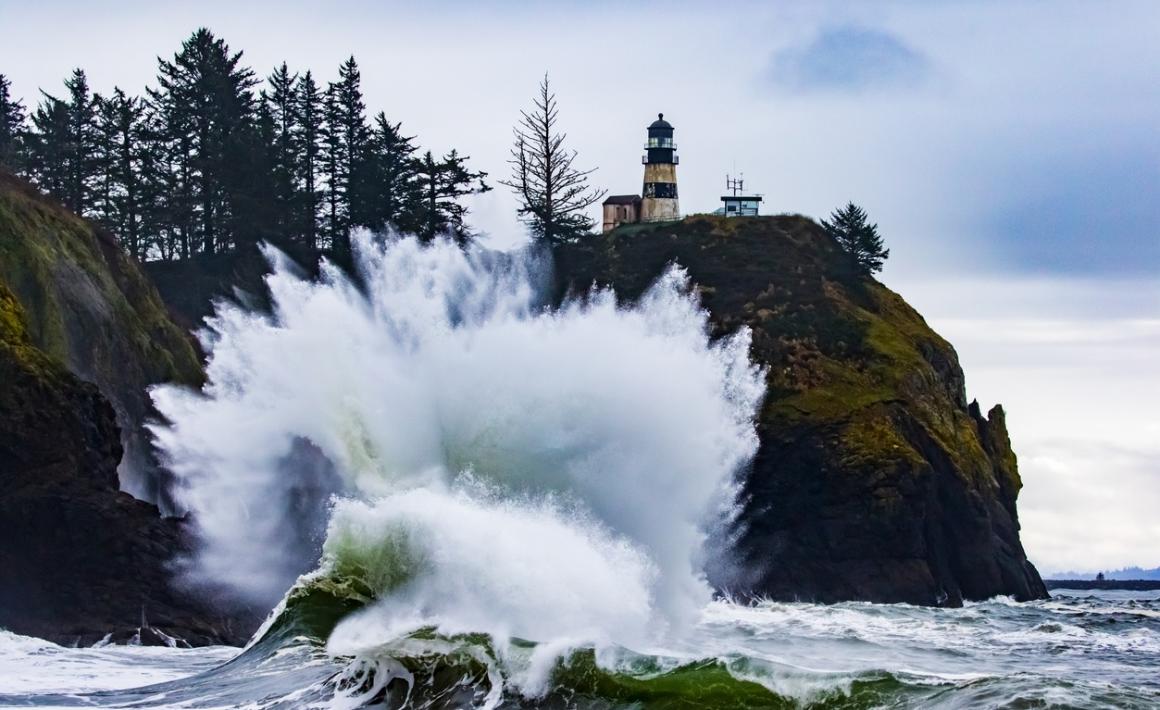
5. Long Beach
The Long Beach boardwalk provides a safe platform for watching the ocean in turmoil. Other places with epic panoramas include the Pickled Fish restaurant, with its wall of windows facing the beach, and the west-facing rooms at the Inn at Discovery Coast (please note, kids are only allowed to stay in the Pool House Rooms here). Both of these businesses are just a few steps away from the boardwalk.
Oregon Coast storm-watching destinations
6. Cannon Beach
With its high-end restaurants and art galleries, Cannon Beach gives off an adult vibe, but when it comes to storm watching, there’s no age limit. Spy waves as they smash, churn and bounce off 235-foot-high Haystack Rock, a sure way to bank some indelible vacation memories. The beach stretches for 2 miles from Ecola Creek to Tolovana Park. Or book a room from a number of oceanfront lodgings to enjoy storm watching in comfort.
7. Manzanita
With tiny Manzanita’s land area measuring less than one square mile, you’re never far from the 7-mile-long shoreline. Much of the available lodging is located adjacent to the shore. Many a traveler has discovered the coziness of this town, so if you encounter a crowd, redirect yourself to Nehalem Bay State Park, which is a 9-minute drive to the south. Situated on a 4-mile-long sandspit, the park offers a panoramic view of Manzanita Bay and provides habitat for deer, elk and coyotes.
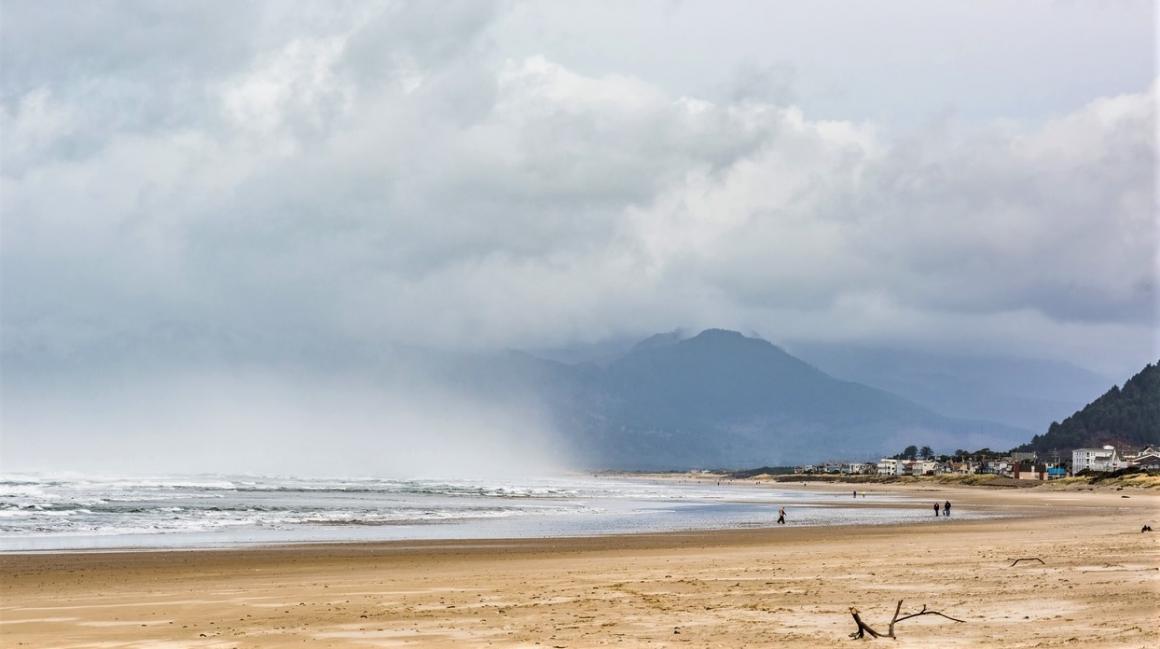
8. Rockaway Beach
For your protection, stay away from the actual beach. The Wayside beach access point, located between U.S. Highway 101 and South First Avenue (look for the red caboose), provides parking, benches and picnic tables to safely observe Mother Nature at her moody work. Another way to watch the relentless assaults staged by the wind and waves is to get a window table at the Sand Dollar Restaurant & Lounge.
Tip: Pack your binoculars for potential gray whale sightings in December and January.
9. Pacific City
While watching the Pacific churn and crash from the outer edge of the beach, you’re certain to get wet. For safety’s sake, stay off the beach and the jetties. If you prefer to remain dry, rent a room at the Inn at Cape Kiwanda, across the street, or get your adrenaline rush from a table with a view inside the Pelican Brewing Company. Seize on a clear moment and do not miss climbing the epic sand dune at Cape Kiwanda.
Tip: When you’re sure the storm has passed and the tide is low, search the tide pools for newly deposited sea stars, anemones and crabs.
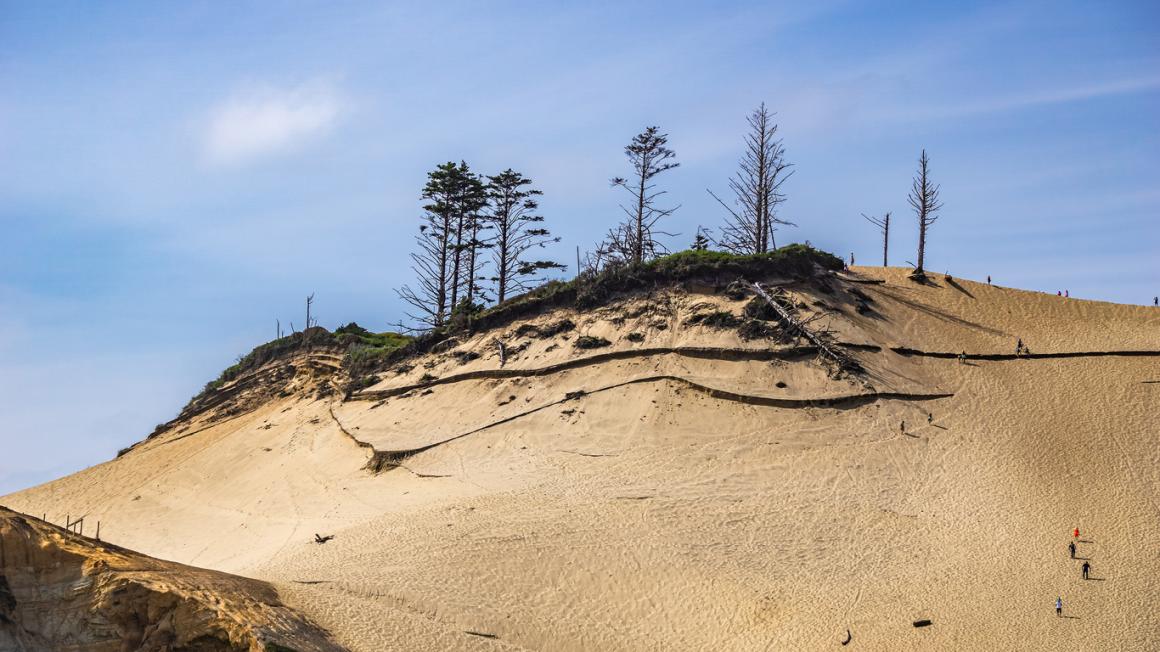
10. Depoe Bay
Located on the central Oregon coast, Depoe Bay’s rocky cliffs face the ocean’s force head-on. The cliffs are famous for their spouting horn — a blowhole created by nature-carved cracks in the rocks — and when waves crash through those cracks, they generate a picture-worthy high-flying plume of spray with an audible hiss. For safety’s sake, avoid the channel bridge during a tempest.
A little to the north, Boiler Bay State Scenic Viewpoint affords spectacular views. Don’t venture down to the small cove in a storm. Instead, stay behind the fence at the headland. Don’t worry: You’ll still get kissed by the mist!
How to stay safe when storm watchingDo you know why you should “never turn your back on the ocean”? “There can be an interval considerably longer than an hour without any especially high waves,” cautions Nicholas Bond, the state climatologist for Washington. “But there is always the chance that higher waves with much greater run-ups can seemingly occur out of nowhere.” Bond also warns storm watchers to watch for a rise in sea level with the flood tide, so they don’t get trapped on the wrong side of a headland. Be very careful in places where there are cliffs on the shore side that limit your ability to escape rising water and/or the development of higher waves. Other precautions include obeying all warning signs and barricades; don’t stand on rocks, logs or driftwood; and have an escape route in mind and stay close to it. Besides taking all of these safeguards to heart, pack clothing to keep everyone warm, dry and happy. “Wear synthetic material like nylon, polyester, polyester blend, [or] wool or merino,” says Michael Fagin, operational meteorologist at West Coast Weather. “If these materials get wet, they’ll still keep you warm.” Dress in layers, advises Fagin, with nylon pants on the bottom. Your outer layer should be a windproof and waterproof jacket. Don’t forget rainproof shoes or boots for outside storm watching. Fagin also suggests carrying a small pack to hold those shed layers of clothing, should the sun come out and warm you up, as well as a water bottle and snack. (Consult our winter weather guide for more great clothing and gear ideas to keep you warm and dry in foul weather.) |
Editor's note: This article was originally published in 2020 and updated for 2023.







